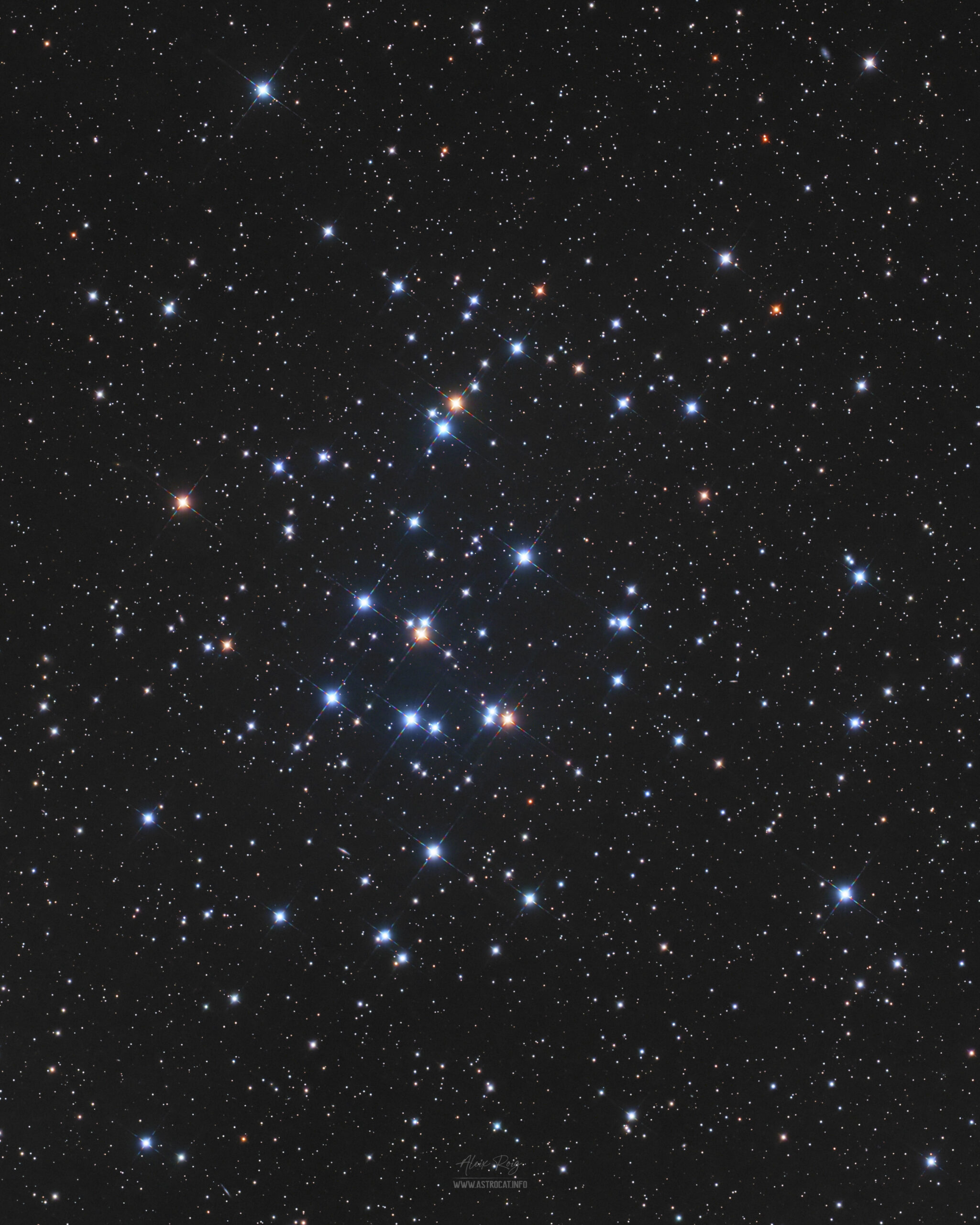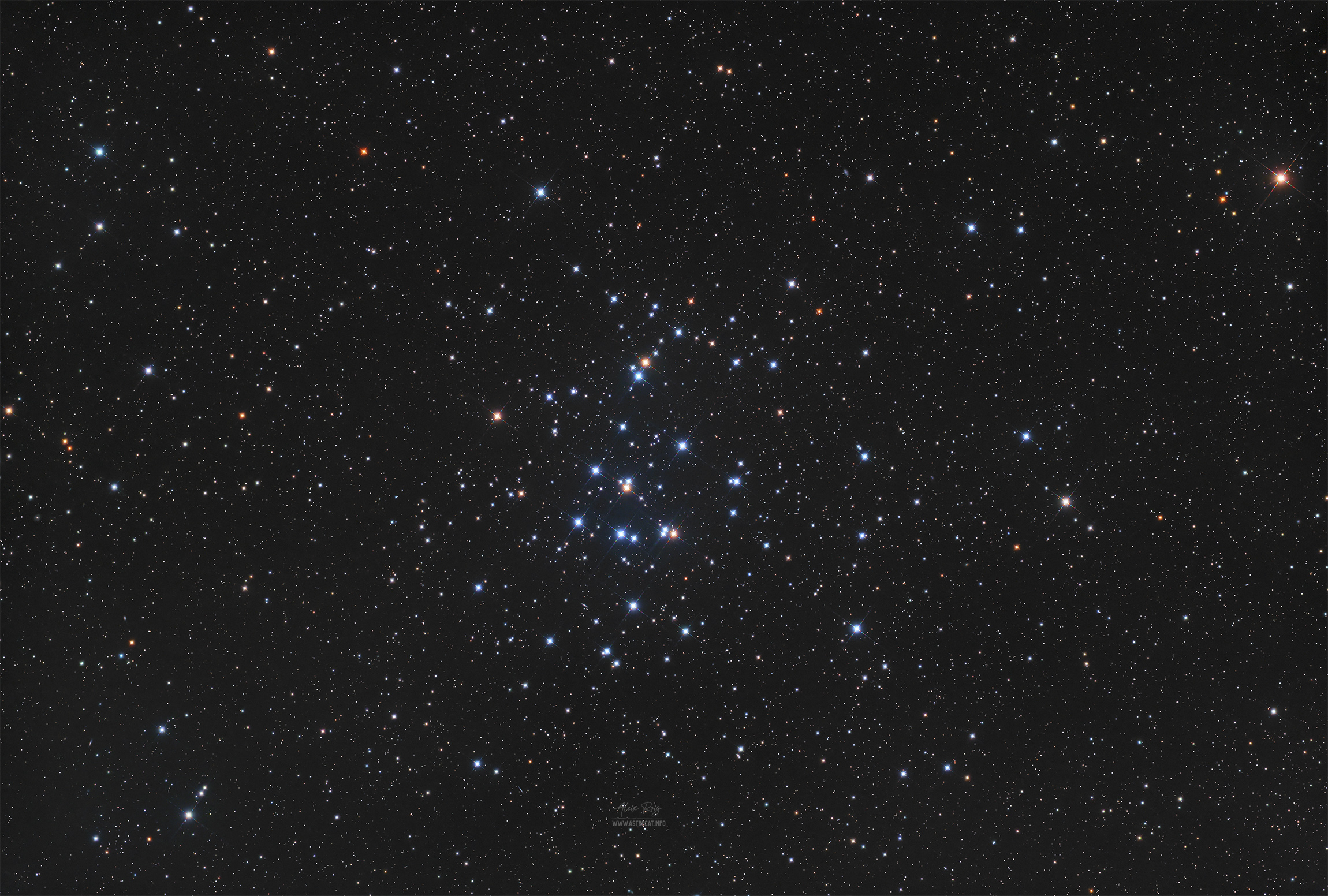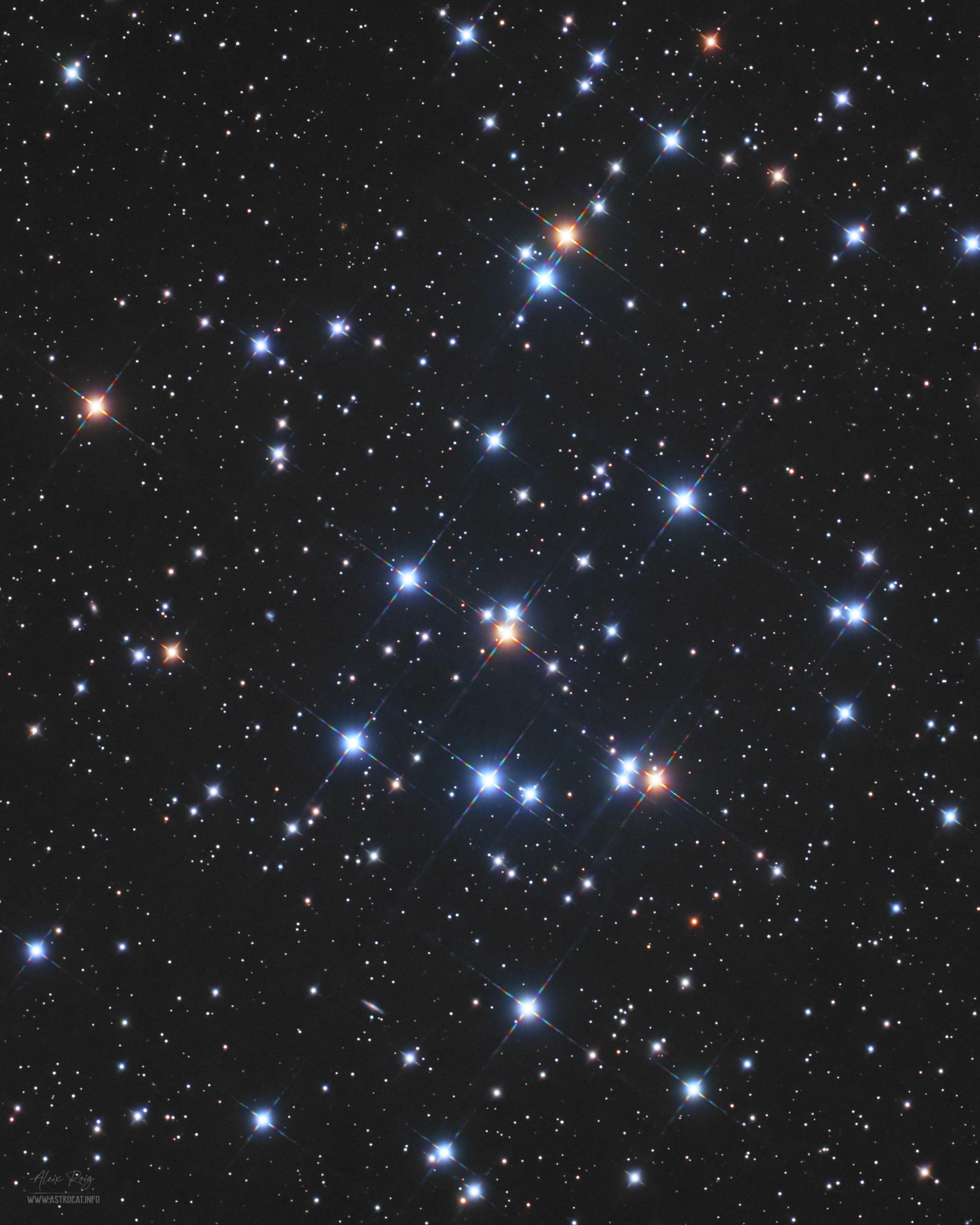The Beehive Cluster, M44, also known as Praesepe, is one of the closest star clusters to our solar system. It’s located in the Cancer constellation some 600 light-years away from Earth.
The cluster is easily visible to the naked eye under a dark sky like Prades (where the image has been taken from), appearing as a hazy patch of light. Through binoculars or a small telescope, it resolves into a group of stars resembling a swarm of bees, which is how it earned its name. The Beehive Cluster contains hundreds of stars, although only about 40 to 50 are easily discernible to the naked eye. It’s estimated to be around 600 to 700 million years old
Based on similar ages and motion through space, M44 and the even closer Hyades star cluster in Taurus are thought to have been born together in the same large molecular cloud. Both clusters also contain red giants and white dwarfs, which represent later stages of stellar evolution, along with many main sequence stars.
A bit of astronomical history about this open cluster:
This object has been observed since ancient times. Ancient Greeks and Romans saw this object as a manger from which two donkeys, the adjacent stars Asellus Borealis and Asellus Australis, are eating; these are the donkeys that Dionysos and Silenus rode into battle against the Titans. Hipparchus (c.130 BC) refers to the cluster as Nephelion “Little Cloud” in his star catalog. In 1609, Galileo first telescopically observed the Beehive and was able to resolve it into 40 stars. Charles Messier added it to his famous catalog in 1769 after precisely measuring its position in the sky.
About the image:
The end of the winter time has come, and this target claims a dedicated session. Last night, the 13th of March 2024, I pointed my newtonian telescope towards this hazy patch of the sky. I’ve never captured a telescopical image of it before, and I’m really surprised about how it turned out. Pure blue and yellow colors alternate with some other reddish, indicating the presence of red giant stars. The scene is not only about stars… It’s also about a pleiade of galaxies that lie on the background of the image. Located milion of light years away from the main scene, those ancient worlds are seen through space and time. What an amazing cosmos escape we have now in the sky in the early spring season that we are entering.
The full image covers an area of 3º33′ x 2º24′ at a resolution of 2.13″/pixel.
Thanks for your time on this website.
Image Details
Lights: 60 x 120″
Calibrated with darks, flats, dark-flats.
Total exposure: 2h
Average Moon phase at 16%
Image resolution: 2.13”/pixel
FOV (full image): 3º33′ x 2º24′
Equipment
Sharpstar 13028HNT + ASI2600MC + L-Quad + ZWO EFW 5pos + ZWO EAF
ZWO AM5 mount
ASI AIR Plus
Guiding with ASI120MM and ZWO Mini Guide Scope
Software
ASI Air software, APP, PIX, LR, PS.
Aleix Roig, March 2024
Prades (Tarragona, Catalonia – Spain).



